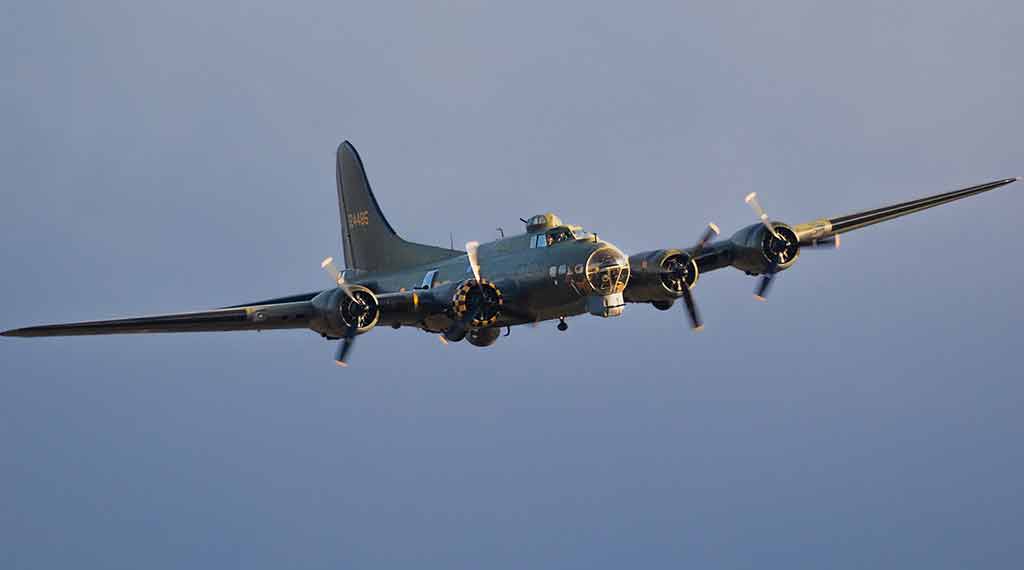
The Boeing B-17 “Flying Fortress” revolutionized aerial warfare when it debuted in the mid-1930s. As a four-engine bomber, it offered greater payload capacity and range than its predecessors. Nicknamed the “Flying Fortress” due to its impressive array of defensive machine guns, the B-17 was designed to withstand heavy enemy fire.
-First used in combat in 1942, it played a crucial role in strategic bombing campaigns over Europe during World War II.
-The aircraft faced significant losses, notably on “Black Thursday” during the Schweinfurt raid, until the introduction of the P-51 Mustang escort fighters.
-Eventually replaced by the B-29 Stratofortress, the B-17 remains a symbol of innovation and bravery.
Unveiling the Flying Fortress: The Story Behind Boeing’s B-17
When the Boeing B-17 “Flying Fortress” first took to the skies in the mid 1930’s, the platform represented a significant leap in capabilities over its predecessors. Equipped with four engines, the B-17 provided greater payloads and range than other bombers previously flown by the U.S. Army Air Corps (USAAC) in the past.
The B-17 was legendary since its maiden flight
The B-17 began life in 1935 when Model 299 took flight in front of reporters and the public at the Boeing field in Seattle, Washington. One reporter, noting the proliferation of defensive machine guns studded all over the fuselage, remarked in a photo caption that it looked like a “15-ton flying fortress.” Boeing quickly trademarked this name and a legendary bomber was born.
The origin story of the Flying Fortress
In the 1930s, the US Army Air Corps (USAAC), predecessor to the US Air Force, began searching for a bomber to replace the Martin B-10. The goal of the program was to bolster defensive air forces in far flung outposts at Hawaii, Alaska, and Panama. The Boeing Company set to work designing a bomber at their own expense, combining elements of their experimental XB-15 bomber and Model 247 transport.
Specs and capabilities
The result was a four engine, low winged monoplane bomber with a 6,000lb payload capable of carrying out strategic bombing of targets deep inside enemy territory. Turbocharged engines enabled a service ceiling of 25,000 to 35,000 feet depending on bomb load, allowing the Flying Fortress to fly far above the worst of antiaircraft fire.
No fewer than 13 machine guns protected each B-17 in nine different positions. Enemies flying at the front of a Flying Fortress had to contend with two guns in the chin turret as well as one in each “cheek” turret.
The flanks of the bomber were protected by waist guns as well as two guns in a ball turret mounted on the bottom of the aircraft. Fighters seeking to attack from above would encounter two more guns in a ball turret mounted atop the aircraft as well as one in the radio compartment and an enemy attempting to sneak up from behind would have to get through the two guns in the tail gunner’s position.
The First B-17 raid occurred in Europe in 1942, when 12 Flying Fortress airframes attacked railroad yards in France. As the war continued, bombing missions for American planes became more deadly.
As explained by the National WWII Museum, “One of the worst days of the war for the B-17 and its crewmen was the second raid on German ball bearing production in Schweinfurt, Germany on October 14, 1943. Losses were so heavy on the mission it became known as “Black Thursday.”
The B-17, for all its armor and firepower, was simply unable to continue to fly unescorted against swarms of German fighter aircraft and their sophisticated air defense system.
The P-51 Mustang soon entered the conflict, however, allowing the B-17s to be escorted out of Germany safely.
Although the Flying Fortress was eventually replaced by the B-29 Stratofortress by the end of the war, the platform retains its honorable legacy.
- US Stands Up New Drone Strike Force in the Middle East - December 9, 2025
- Has Russia Finally Sold its Su-35s to Iran? - December 2, 2025
- Iran’s Growing Missile Arsenal Is a Challenge for Israel - November 18, 2025
